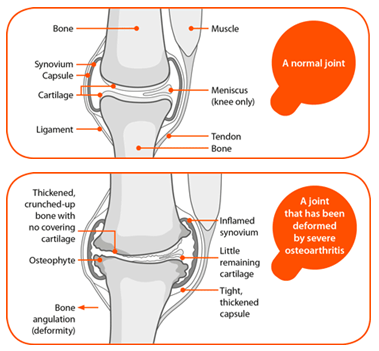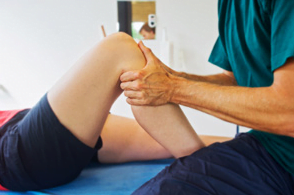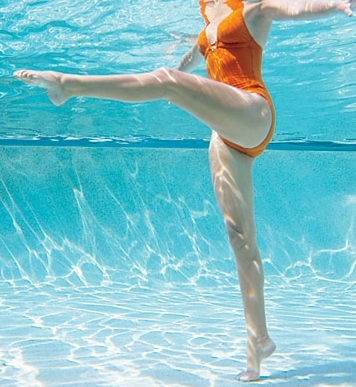Knee Arthritis – How you can manage it and still lead an active life.
%22%20transform%3D%22translate(.8%20.8)%20scale(1.57422)%22%20fill-opacity%3D%22.5%22%3E%3Cellipse%20fill%3D%22%23b4b995%22%20rx%3D%221%22%20ry%3D%221%22%20transform%3D%22matrix(-65.92189%2063.88276%20-35.88375%20-37.02916%2010.1%20107)%22%2F%3E%3Cellipse%20fill%3D%22%23e0f285%22%20rx%3D%221%22%20ry%3D%221%22%20transform%3D%22matrix(13.7625%20-20.15127%2045.32907%2030.9579%2029.5%20128)%22%2F%3E%3Cellipse%20fill%3D%22%23fff%22%20rx%3D%221%22%20ry%3D%221%22%20transform%3D%22rotate(-102.7%20178.3%20-34.1)%20scale(29.0657%2020.2983)%22%2F%3E%3Cellipse%20fill%3D%22%23e6e5e9%22%20cx%3D%22172%22%20cy%3D%2262%22%20rx%3D%2287%22%20ry%3D%2287%22%2F%3E%3C%2Fg%3E%3C%2Fsvg%3E) What is Arthritis?
What is Arthritis?
Osteoarthritis is a degenerative joint disease which affects the bone and cartilage, it is extremely common in people over 50 (1).
In the knee the early symptoms are stiffness or aching in the knee when weight bearing, or stiffness when trying to get moving in the morning. Later, symptoms can progress to swelling around the back and front of the knee, a reduction in the amount of movement in the knee and some noises when the knee is flexed (2).
What Causes It?
Degenerative or mechanical arthritis is a group of conditions where the main problem is damage to the cartilage which covers the ends of the bones. Normally the smooth, slippery cartilage helps the joint to move smoothly. In this type of arthritis the cartilage becomes thinner and rougher. The bone underneath then tries to repair this damage but sometimes overgrows, altering the shape of the joint. This is commonly called osteoarthritis.
 Osteoarthritis of the knee can result from many factors, the main one being age, 30% of patients 70 or older when x-rayed have osteoarthritis in the knee (2). Previous damage to the joint, for example a fracture, ligament or meniscus injury, or previous inflammation in the joint may lead to arthritis later on. Other factors such as gender (women are more likely than men to get arthritis), weight and overuse can also play a part. (3)
Osteoarthritis of the knee can result from many factors, the main one being age, 30% of patients 70 or older when x-rayed have osteoarthritis in the knee (2). Previous damage to the joint, for example a fracture, ligament or meniscus injury, or previous inflammation in the joint may lead to arthritis later on. Other factors such as gender (women are more likely than men to get arthritis), weight and overuse can also play a part. (3)
What can I do about if I think I have it?
 The best thing to do is to get an assessment and a diagnosis from a health professional such as your doctor or an osteopath. Most of the time the diagnosis can be made in the clinic room but if the symptoms are severe or debilitating then you may require an x-ray.
The best thing to do is to get an assessment and a diagnosis from a health professional such as your doctor or an osteopath. Most of the time the diagnosis can be made in the clinic room but if the symptoms are severe or debilitating then you may require an x-ray.
If you have been diagnosed with osteoarthritis of the knee there are several ways that you can help relieve the pain and slow the progression of the disease. It is best to take action early and to maintain good habits (2).
The most important action you can take is to start exercising the knee as this has been shown to be very beneficial in the short and medium term (4). The most important aspects to develop are;
%22%20transform%3D%22translate(.5%20.5)%20scale(1.07031)%22%20fill-opacity%3D%22.5%22%3E%3Cellipse%20fill%3D%22%23ffffeb%22%20rx%3D%221%22%20ry%3D%221%22%20transform%3D%22matrix(115.32421%20-8.3272%204.08341%2056.55165%2058.3%20255)%22%2F%3E%3Cellipse%20fill%3D%22%2301acd3%22%20rx%3D%221%22%20ry%3D%221%22%20transform%3D%22rotate(-172.2%2022.4%2053.9)%20scale(84.77825%2050.29798)%22%2F%3E%3Cellipse%20fill%3D%22%23a29677%22%20cx%3D%22148%22%20cy%3D%2221%22%20rx%3D%2244%22%20ry%3D%22100%22%2F%3E%3Cellipse%20fill%3D%22%2317bfe7%22%20rx%3D%221%22%20ry%3D%221%22%20transform%3D%22matrix(34.04766%20-57.98964%2034.12995%2020.03884%20226.7%2094.1)%22%2F%3E%3C%2Fg%3E%3C%2Fsvg%3E) 1. Maintain knee range of movement
1. Maintain knee range of movement
Using stretching, exercises, or joint mobilisation, either at home or by your osteopath (2).
2. Maintain or maximise strength
Using strengthening exercises to strengthen the muscles around the knee and hip
3. Maintain or improve aerobic capacity
e.g walking, exercise bike, swimming, aqua-aerobics.
4. Reduce weight or maintain a healthy weight
Healthy diet and exercise to reduce the load on weight bearing joints.
Treatments such as ultrasound (5), and manual therapies such as osteopathy (6) are also beneficial to osteoarthritis in the knee.
What is our experience as osteopaths?
 Patients present to us with knee pain, specifically osteoarthritis of the knee on a daily basis. Due to the degenerative nature of the disease we cannot reduce the damage already done but we can help to reduce and manage your pain, improve the motion of the knee joint and other joints and muscles that may be affected. Also we can you give the latest practical, evidence based advice on how manage your condition so that you can go about your day-to-day activities as comfortably as possible.
Patients present to us with knee pain, specifically osteoarthritis of the knee on a daily basis. Due to the degenerative nature of the disease we cannot reduce the damage already done but we can help to reduce and manage your pain, improve the motion of the knee joint and other joints and muscles that may be affected. Also we can you give the latest practical, evidence based advice on how manage your condition so that you can go about your day-to-day activities as comfortably as possible.
Do you want to know what is causing your pain and if we can help? Why not take advantage of our new patient assessment introductory offer to get you started towards a tailor made recovery plan for only £19.
Are you in a lot of pain and want to get better as soon as possible? If so then why not book in for a new patient consultation, with treatment on the day, for £75.
We are also there to help you from home. Take a look at our suite of exercise resources and advice sheets which you can easily download and use from home.
References:
1. Arthritis Research UK “What is arthritis?” Available at, http://www.arthritisresearchuk.org/arthritis-information/conditions/arth….
2. Magee, D. Zachazewski, J. and Quillen, W., 2009. Pathology and Intervention in Musculoskeletal Rehabilitation, Missouri, Elselvier
3. Tidy, C. (2014). Osteoarthritis patient information leaflet. Available at, http://patient.info/health/osteoarthritis-leaflet
4. Fransen et al (2015). Exercise for osteoarthritis of the knee. Available at, http://onlinelibrary.wiley.com/doi/10.1002/14651858.CD004376.pub3/abstract.
5. Rutges et al (2010). Therapetic ultrasound for osteoarthritis of the knee or hip. Available at, http://onlinelibrary.wiley.com/doi/10.1002/14651858.CD003132.pub2/abstract.
6. French et al (2010). Manual therapy for osteoarthritis of the hip or knee: A systematic review. Manual Therapy, Vol 16, 2, pp109-117.

 What is Arthritis?
What is Arthritis? 1. Maintain knee range of movement
1. Maintain knee range of movement